If you have these items at hand, creating and cooking low FODMAP recipes and enjoying low FODMAP foods will be easier than ever. Be sure to check out our 8 Essential Low FODMAP Refrigerator & Freezer Items article and 10 Essential Low FODMAP Baking Ingredients.
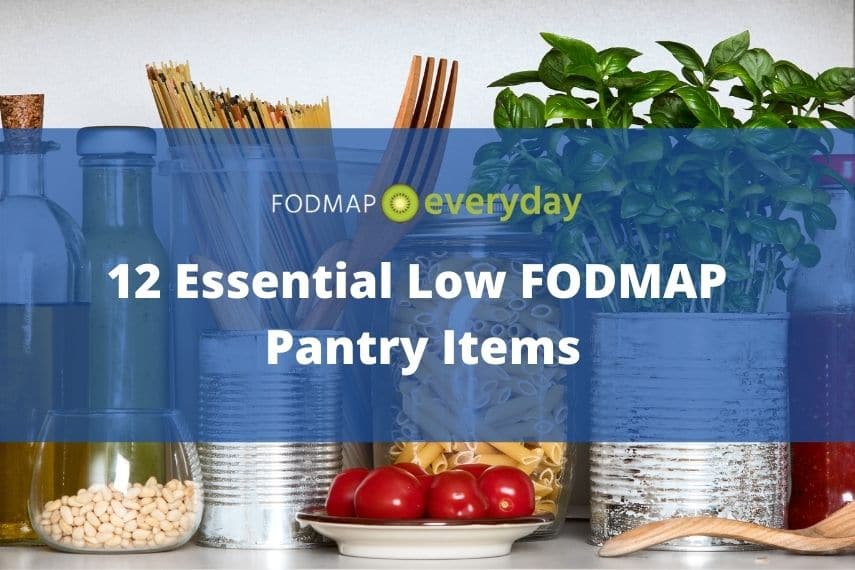
As always, please refer to your Monash app and FODMAP Friendly smartphone apps for specific serving size recommendations.
And be sure to check out our Shop for all of these and more!
Stock Your Low FODMAP Pantry
1. Canned Beans & Legumes
Many folks are surprised to learn that there are low FODMAP amounts of canned beans and legumes that are Elimination worthy – in addition to being inexpensive, high protein and fiber rich. The Oligos in these foods are water soluble and if you buy canned, drain, rinse and drain again you will be able to maximize your portions. We keep canned chickpeas, lentils and black beans on hand at all times.
Read our Explore An Ingredient: Lentils for very important information on the correct volume serving size of lentils that supersedes the information on the Monash app.
2. Canned Tomato Products
Our pantry is always stocked with canned diced tomatoes, crushed tomatoes, puréed tomatoes, plain tomato sauce and also prepared pasta sauces. You do have to read labels as high FODMAP ingredients such as garlic and onion might be included.
With cans and jars of these around you will be ready to whip up marinara sauces, use in lasagna and other pasta dishes, enhance Indian and Mexican dishes and create easy homemade soups.
We love Muir Glen Organic products and Rao’s Sensitive Marinara Sauce. Fody makes several pasta sauces as well that are lab tested and certified low FODMAP: Marinara, Tomato Basil and Arrabbiata. And of course we have a homemade Quick Tomato Sauce for you, as well.
Shop For Tomato Sauce
3. Crackers, Rice Cakes & Chips
Making sure you have low FODMAP snacks on hand is one to make sure you stick with your diet and crackers and rice cakes come in very handy.
Try a couple of basic crackers, like KA-ME Rice Crackers, Mary’s Gone Crackers Original and Back To Nature Multi-Seed Rice Thins Crackers. Great with cheese, nut spreads or even plain.
For rice cakes, take a look at Lundberg brand for both their classic thick-style rice cakes and also their elegant thin rice crackers that they call Thin Stackers (they do not crumble as easily as the classic-style).
When it comes to chips you have many to choose from, but we think at the very least you should have some tortilla corn chips on hand. Plain or with low FODMAP salsa or guac, they will remind you of your pre-FODMAP days. When you are ready to branch out, take a look at potato chips, various vegetable chips and ones made from popcorn like popchips – sweet and salty.
Buy Crackers, Rice Cakes and Chips
4. Garlic & Onion Replacers
FODMAPers are obsessed with infusing their cooking with garlic and onion flavor – while leaving the actual fresh onions and garlic behind. Luckily, more and more options are becoming available.
Infused Oils
Whether olive oil based, or vegetable oil based, infused oils will allow you to have your garlic or onion flavor and stick to a low FODMAP diet at the same time – even during the Elimination phase. Read our article on commercially prepared garlic-infused oils or you can also make your own Garlic-Infused Oil or Onion-Infused Oil.
We love Tourangelle for vegetable-based oil (for our Tex-Mex, Indian and Asian cooking). Fody has a Shallot-Infused Olive Oil that we adore.
Buy Infused Oils
Dry Garlic & Onion Replacers
In conventional recipes garlic powder and onion powder frequently called for. Several companies have come up with dry, granular products that can be used similarly. Take a look at Gourmend Garlic Scape Powder and Gourmend Garlic Chive Powder; Smoke n’ Sanity Essence of Garlic Salt; and FreeFod Garlic Replacer and FreeFod Onion Replacer. They are all a little different from one another in taste and application. Experiment with them and find your favorites.
Buy Garlic & Onion Replacers
5. Gluten-Free All-Purpose Flour
Not all gluten-free flour is low FODMAP, and of course the low FODMAP diet is not a gluten-free diet. That said, we think the most helpful flour to keep on hand, and our #1 choice for a conventional all-purpose flour replacement, is Bob’s Red Mill Gluten Free 1 to1 Baking Flour. It is what we use most often in the Test Kitchen. You will be able to make Banana Bread Muffins, Pie Crust, cakes, cookies and thicken sauces with ease.
For a more in depth look at flour in general, read our article Choosing A Low FODMAP All-Purpose Flour and also take a look at our article, The Essential Low FODMAP Baking Pantry.
Buy GF All Purpose Flour
6. Gluten-Free Bread
While low FODMAP bread does not necessarily have to be gluten-free, a GF version will certainly be more versatile, especially during the Elimination Phase. You can read more in How To Choose Low FODMAP Bread.
With suitable sandwich style bread on hand you can make sandwiches for lunch, grilled cheese, French toast and croutons for salad and soups. You can always start by referring to your apps and choosing a lab tested and certified low FODMAP bread; there are many to choose from.
When that is not possible, there are still many choices listed in the article linked above, that were curated by Monash trained RDs. The article also teaches you how to read labels to make educated assessments on your own.
Here in the U.S. the easiest brand to find is Udi’s. Many FODMAPers have found Udi’s White Sandwich Bread to be not only suitable, but tasty as well. Also look at Canyon Bakehouse Gluten-Free Country White Bread, Franz Gluten Free 7 Grain or Vitality Bakehouse Wholemeal Spelt & Chia Sourdough (not available everywhere).
Buy Gluten Free Bread
7. Gluten-Free Pasta & Noodles
With appropriate low FODMAP pasta and noodles on hand you will always be ready to make a last-minute dinner. A little of that Garlic-Infused Oil, some grated Parm, freshly ground black pepper and you are good to go.
For European style dried pasta we think Jovial brand has the best texture and they offer many shapes, from shells to lasagna, farfalle, fusilli and of course, spaghetti, to an egg-rich tagliatelle that we use when conventional recipes call for “egg noodles” like our kugel.
We have an entire article on Asian Noodles and usually go to our local Asian stores for these, from very fine vermicelli (think Summer Rolls) to broader styles for pad Thai and lo Mein.
Buy Gluten-Free Pasta & Noodles
8. Grains
Grains offer a host of nutritional benefits and can and should be included in your low FODMAP diet.
Rice – basmati, brown and white, contain no FODMAPs. Glutinous rice has a generous low FODMAP portion size. Stock up on quinoa (all colors) as well as millet and rolled oats. These basics will take you through breakfast, lunch and dinner – and snacks.
9. Herbs, Spices & Seasonings
Oh, where to start with this category? Some folks think the low FODMAP diet is boring, but one look at all the herbs spices and condiments that are low FODMAP and it is instantly apparent that there are tons of ways to bring flavor to your food. First thing – toss the conventional garlic and onion powder.
You need good salt and pepper. We suggest Diamond Crystal Salt for cooking and a fine-grain table salt for baking. Always use freshly ground black pepper for best flavor. We like Tellicherry peppercorns the best.
We keep a well-stocked herb & spice drawer in the Test Kitchen and there were very minor adjustments made from our pre-FODMAP days. Specifics are listed in the Monash app but basically all of your most common dried herbs that you used before you can still use now: basil, dill, oregano, thyme and rosemary are the ones we reach for most often.
When it comes to spices, keep cumin, coriander, turmeric, paprika, smoked paprika, cinnamon, ginger, nutmeg and ground cloves on hand.
Make sure to read labels carefully for curry powder blends, Italian herb blends and especially anything labeled “chili powder”. Many if not most contain garlic and/or onion. We like Frontier Curry Powder with Turmeric, Paprika & Fenugreek and McCormick Gourmet Italian Seasoning for garlic-free and onion-free choices.
For chile, refer to our article on Chile, Chili, Chilli & The Low FODMAP Diet. You will do best buy buying ground peppers themselves such as cayenne and chipotle.
We also recommend keeping nutritional yeast on hand. Its “cheesy” flavor is perfect for popcorn, among other uses, such as our Vegan Kale Pesto.
Shop Herbs, Spices and Seasonings
10. Oils & Vinegars
Oils are fats and therefore contain no FODMAPs. We always keep olive oil and vegetable oil on hand at the very least, but why not expand your horizons? Coconut oil is popular and oils like walnut and hazelnut can add pizzaz to your salad dressings.
Malt vinegar contains no FODMAPs and balsamic, red wine, apple cider vinegar and rice vinegar all have low FODMAP serving sizes.
Buy Oils & Vinegars
11. Spreads
This is a broad category because it encompasses both nut-based spreads like peanut butter and almond butter (creamy or crunchy) but also “spreads”, like jams, jellies and savory spreads, too.
We are partial to all-natural types of peanut butter and almond butter that list just the nuts and salt as the only ingredients, and occasionally oil. Teddies and Smucker’s are the natural peanut butters we use in the Test Kitchen. We also occasionally use “natural creamy”, “no-stir” styles as well. Please use what is called for in individual recipes.
Make sure to read ingredient lists for almond butter; many contain sugar. That isn’t an issue from a FODMAP perspective, but we don’t think it is needed here. We like Justin’s and MaraNatha.
Strawberry and raspberry jam as well as orange marmalade have low FODMAP serving sizes. We like to use those that list the fruit before sugar. And for those so inclined, Marmite and Vegemite are low FODMAP as well and add umami to many dishes.
Buy Spreads
12. Sweeteners
There are many low FODMAP sweeteners including white sugar, brown sugar and maple syrup. Those are our recommended basics.
You could also consider stocking rice malt syrup, which contains no FODMAPs, and is a great substitute for liquid sweeteners in conventional recipes when high(er) FODMAP honey or molasses are called for, or when you want a gentle sweetness. For recipes using maple syrup you could use half rice malt syrup (also called rice syrup or brown rice syrup) to reduce the sweetness.
Honey and molasses each have very small serving sizes, and we do take advantage of that in some recipes, but they are by no means considered basic must-haves.
Read more in our Explore An Ingredient: Sugar, Is Honey Low FODMAP? and Explore An Ingredient: Maple Syrup
Buy Sweeteners
The Takeaway
Preparing low FODMAP food does not require anything out of the ordinary and as with any food preparation using high-quality ingredients will make the process go as smoothly as possible and give you the best results.
Check out our articles on 8 Essential Low FODMAP Refrigerator & Freezer Items and 10 Essential Low FODMAP Baking Ingredients.
And be sure to check out our Shopping Lists which have thousands of low FODMAP food items curated by our Monash University trained RDs.
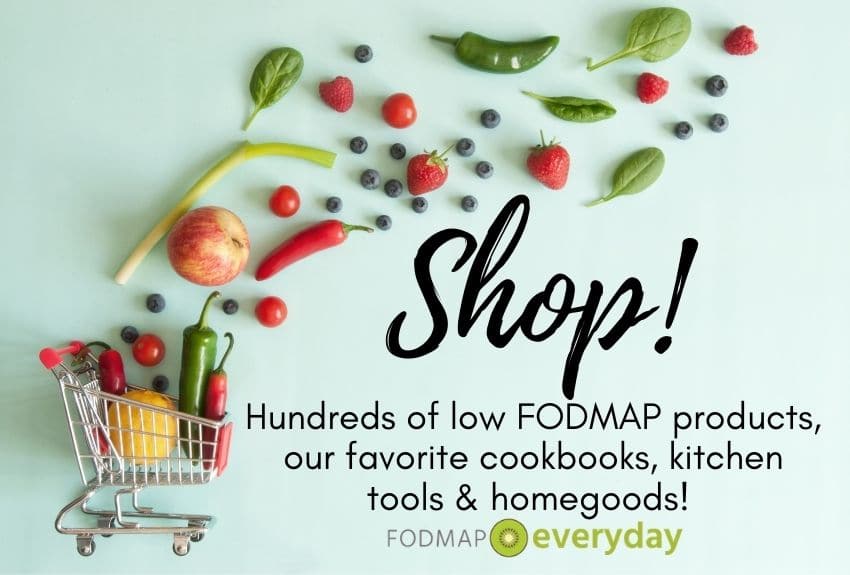


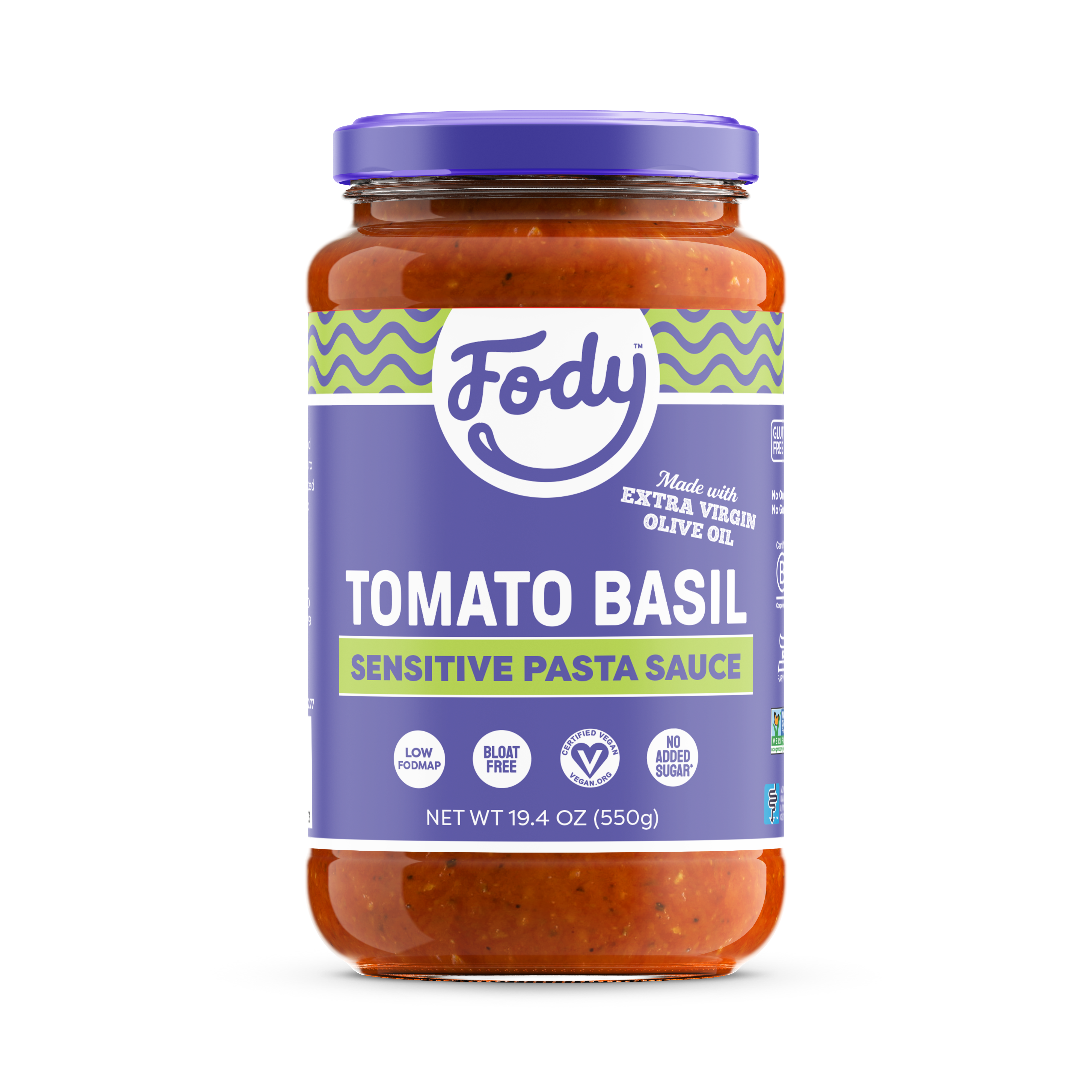

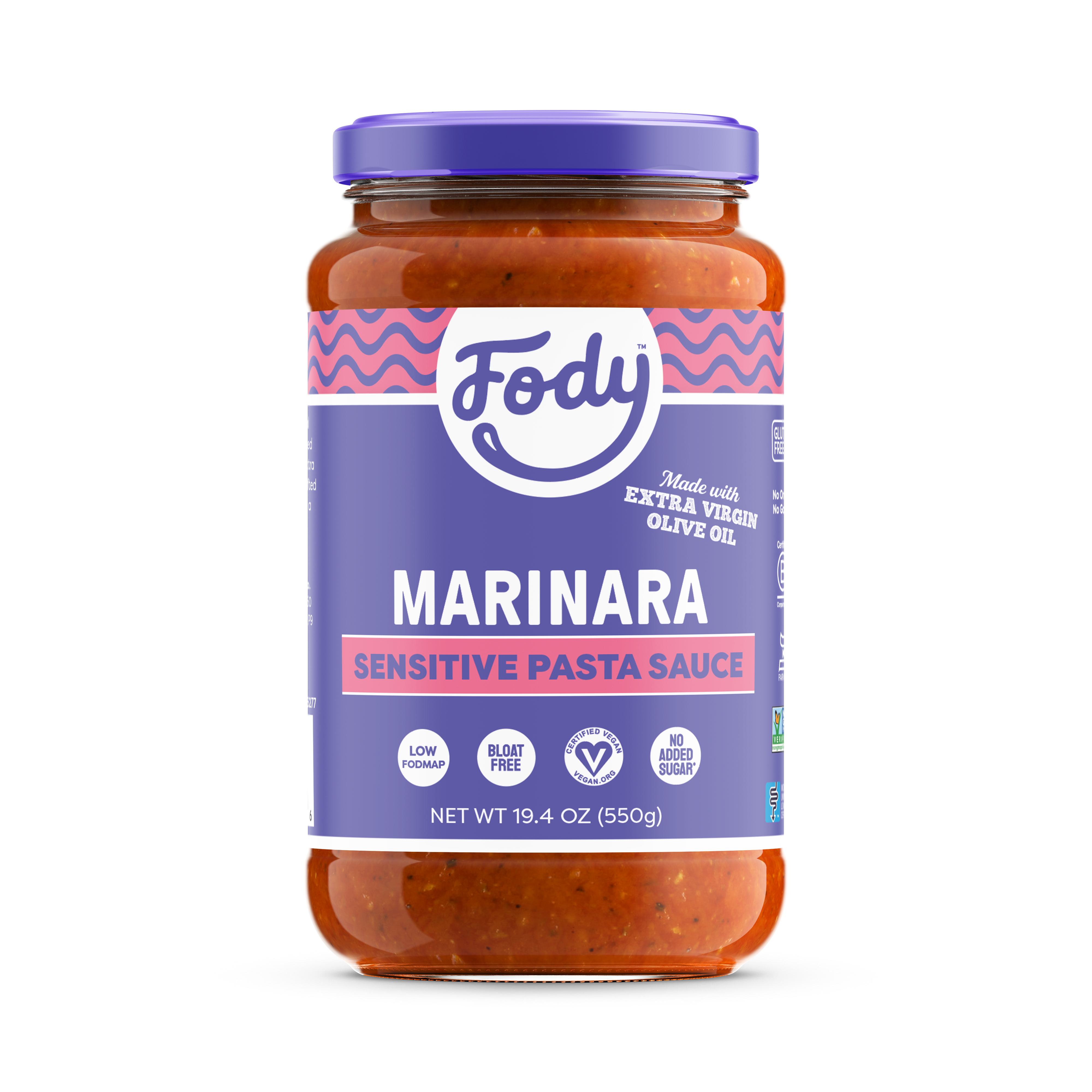




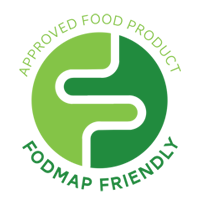
















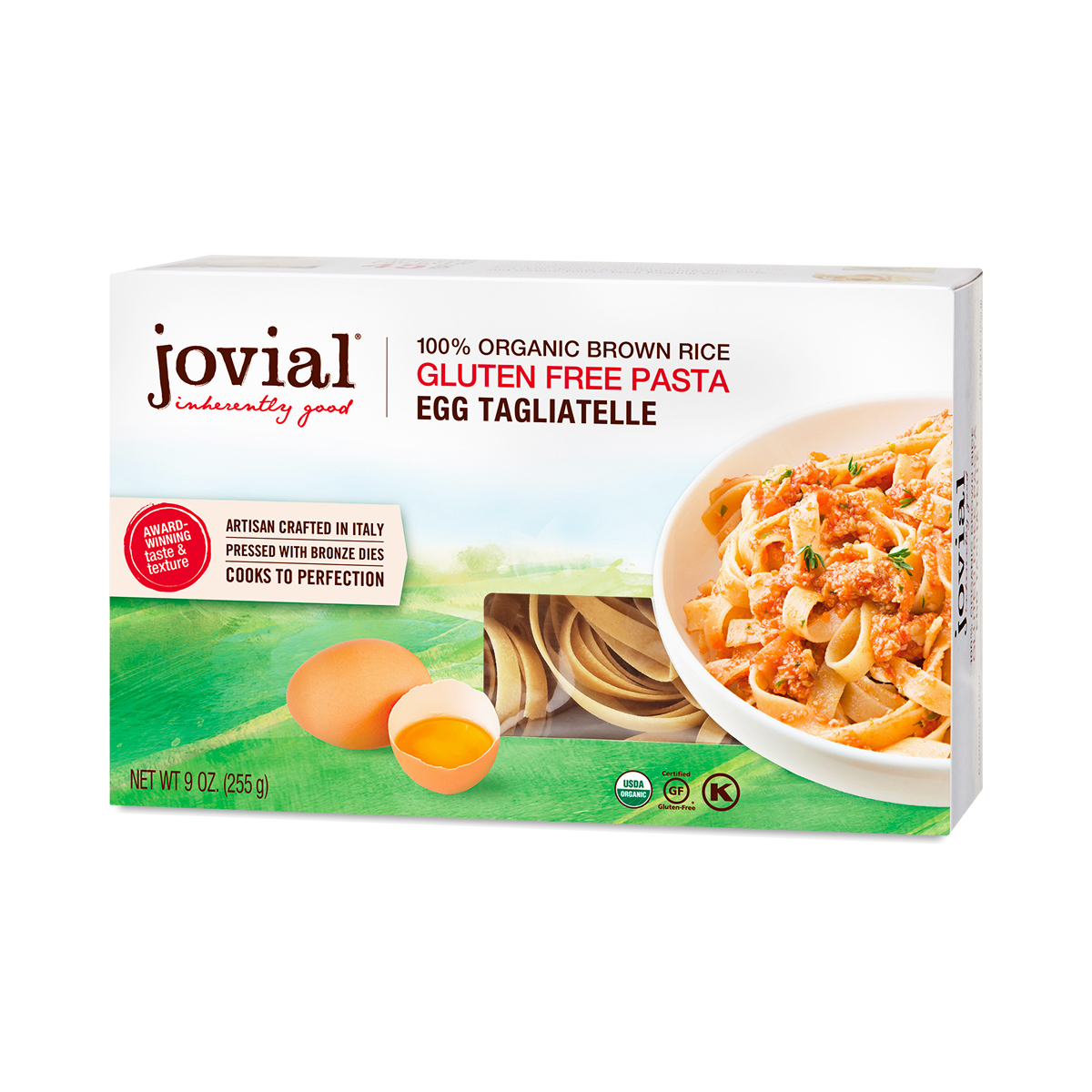







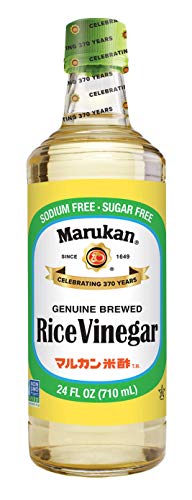





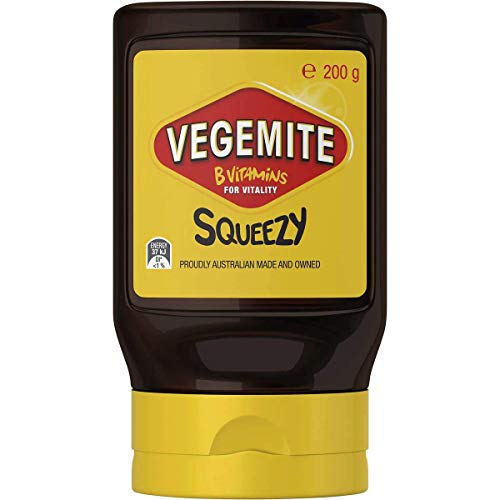







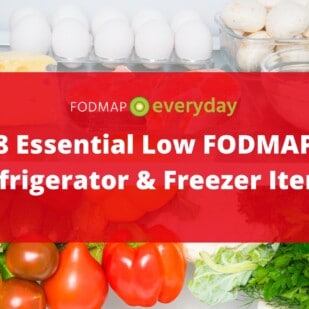
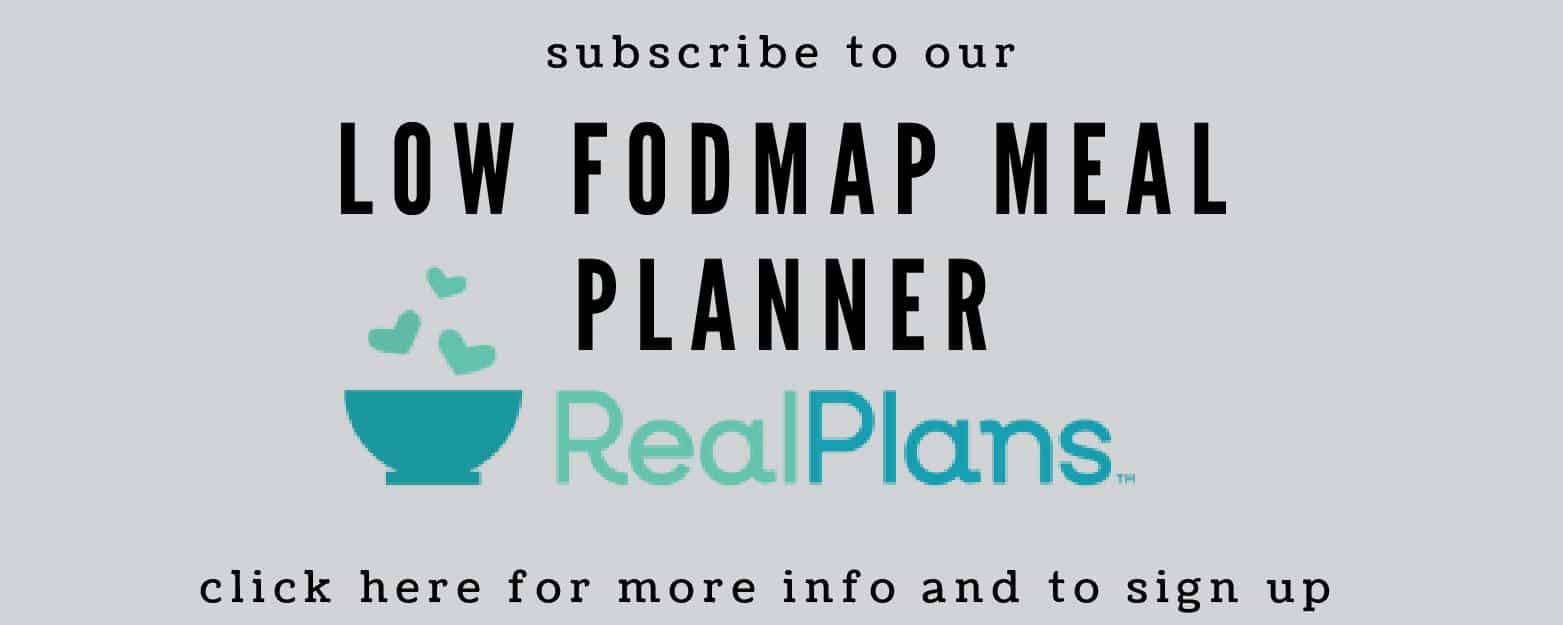





Hi. I have IBS. And would love some receipts
Hi Donna, you are on the right place. Please come to the RECIPES page. We have over 800 for you.
Is the recommendation for Udi’s Soft White Sandwich Bread based on anecdotes from followers of the low FODMAP diet? This comes as a surprise to me, as pea starch is a primary ingredient. I previously asked Monash University about pea starch because it is common in gluten-free products in Canada, but they could only say that it hasn’t been tested.
I have seen Mary’s original crackers suggested as low FODMAP on some other websites as well, but this doesn’t seem entirely obvious as a processed grain and seed product. They are somewhat similar to Carman’s crackers that have been tested by Monash to have a low FODMAP serving of 5 crackers. Does Mary’s make any claim about low FODMAP status or serving size?
Similar comments can be extended to other untested products, such as cereals in the article https://www.fodmapeveryday.com/6-low-fodmap-cereals-that-we-love/. We know that the processing of rice and corn can completely change the FODMAP content, such as in puffed/popped rice or corn thins in the Monash app.
I understand the position of FODMAP Everyday that some products are likely to be low FODMAP based on ingredients, and that each person has to eat within her own tolerances. However, the presentation of untested items as low FODMAP could be problematic for some readers who are just starting the diet and may not be aware of some subtleties. If you have more information about these products that is not readily accessible but supports the recommendations, it would be helpful if it can be shared. Thank you.
Hi Melissa, great questions all around . I will answer them one by one as there are several and I want to address all of your queries. First of all the recommendation of the Udi’s soft white sandwich bread is indeed anecdotal, but it is anecdotal information gathered from several Monash trained registered dietitians. There are RDs on our team who consider this product low FODMAP at certain serving sizes and there are dieticians outside our organization such as Kate Watson and Kate Scarlata who also agree about this product. The statements are made not only from their educated understanding of what FODMAPs are but also from observations they have made with patients.
As to Monash telling you that they “could only say it hasn’t been tested” I have to say you have to understand how Monash works and read between the lines a little bit. This part of the note is going to get complicated. For instance, there are many commercially prepared products such as breads and cookies and sauces and condiments that have been lab tested and certified low FODMAP by either Monash University, FODMAP Friendly, or both ,and there are individual ingredients in those items that have not been tested on their own. If you ask Monash about one of those ingredients, they will tell you that the ingredient has not been tested but what they really mean is it hasn’t been tested on its own because we know it has been tested within a product that they themselves have lab certified.
So, we know that there is an amount of this ingredient that is indeed low FODMAP. If you study certified products you will find all kinds of examples of this from things like bamboo fiber to soy protein, fig paste, apple juice concentrate and even more everyday ingredients like yeast.
I also want to point out that if you study certified products you will also see that there are what are considered high FODMAP ingredients within many different certified products. Things like garlic and onion that are found in Worcestershire sauce as an example.
This is very important to know and to note because again what it means is that serving sizes and portions are extremely important. The amount of garlic and onion in Worcestershire sauce does not cross a threshold at the recommended serving size, and therefore the serving size can be considered low FODMAP , yet if you ate a large serving size it would be high FODMAP.
To answer your question about Mary’s crackers, no, Mary’s does not make any claim about FODMAP status. This is a product that has been reviewed by many registered dietitians including those who are Monash trained.
You are correct that processing can affect the FODMAP load of a particular food. And sometimes it can be almost inexplicable, such as the fact that sprouting can have the effect of lowering FODMAPs in some instances and raising FODMAPs in others.
We not only have a team of Monash trained registered dietitians but I have gone through the dietitian training with Monash myself. We take our recommendations and statements very seriously. And, you will also notice, that we are constantly reminding people that FODMAP tolerance is highly individual and one should eat to their tolerance, which can only be assessed after a structured elimination phase and challenge phase, preferably conducted along with a trained dietitian.
I have a bunch of articles and ideas to recommend to you. For instance, if you are not a member already you could come join our low FODMAP map for Foodies group on Facebook. I run a very tight ship over there and everything in that particular group is low FODMAP. Period. In another group on Facebook, which is Uncensored low FODMAP recipes, we take a slightly broader view for those who are comfortable with that and want that level of exploration.
I think you will really like this one article called Ask The Right Question: Is it low FODMAP versus Can I Tolerate it? Another article that I think you should read is What Is A Low FODMAP Serving Size? The article we have on Reading Nutritional Labels and what they mean will be of interest to you – serving sizes are not what you think they are – as well the article on How to Read a Low FODMAP Certified Product Label.
There are some things that you might not be aware of when it comes to Monash and serving sizes, which is that they also take Australian healthy eating guidelines into account. This is why sugar for instance has a four tablespoon serving and is not stated as unlimited. Someone reading that would think that if they had more than 4 tablespoons that the FODMAP load would kick in, but that is not the case. Due to the fructose balance in sugar it does not contain any FODMAPs but Monash doesn’t want to tell people to eat sugar freely because of the Australian healthy eating guidelines. We challenged them on this because three years ago the app said a serving size was one tablespoon of sugar and we knew for a fact that they had approved of recipes that had more than one tablespoon per serving, so we had a discussion with them about this which is when we learned about what I just explained. Very shortly after that the app went up to a serving size that it is now which is 4 times what it was.
And Lastly the thing to understand is that the world of FODMAPs is relatively young and even Monash has changed statements about certain things as the years go on and after more clinical studies are done.
But in the end truly the most important thing to pay attention to is your own tolerance. This is why crowd sourcing information on social media about FODMAPs is difficult and can lead to confusion because you could have six people in a room all who have IBS and they could all eat the recommended amount of the Udi’s bread or the recommended amount of a certified low FODMAP product and they could all have different reactions.
I love the fact that you use the word subtleties. I very often like to say that the diet is nuanced and complex. I also like to point out that the results in the app are based on lab results and none of us are labs.
I hope that this has been helpful and in the end I would suggest trying a slice of Udi’s bread if that’s what you were thinking about and assess your own reaction. Also, another thing I like to remind people, which I do not think is pointed out enough, is that the reaction you have today to a FODMAP load is not necessarily where you’re going to be forever. This is why it makes sense to retry foods down the line when you are stable again . You might very well have a different reaction and be able to tolerate something six months from now that you can’t tolerate today.
Thank you for the comprehensive reply, Dede.
I actually wasn’t referring to myself as someone new to the low FODMAP diet, but I think your comments will be very helpful to those readers as well. FODMAP Everyday has been a great resource for me from the beginning and I am familiar with the principles you outlined above, thanks in part to the articles on this website. (By the way, the chocolate chunk and nut blondies in your recipes section are also fantastic.)
To the point you are making in the “Ask The Right Question” article, the anecdotal evidence about Udi’s bread could reflect the fact that this untested bread is low FODMAP according to accepted guidelines, or it could be that the people who reported their experiences can tolerate it. Can you please point me toward any tested products that contain pea starch (I don’t know of any examples) so that I can assess the relative proportions of ingredients for myself?
Thanks again for your assistance.
I cannot think of any offhand. I would go through Schar products and I would also try looking through the more processed baked products listed through FODMAP Friendly. But really all you have to do is if you are stable try a product yourself and assess your reaction. That’s what’s important more so than anecdotal evidence with other products and other people. I also wanted to add that there are several certified products that contain wheat starch and that is something that has gone into the thought process as well FYI